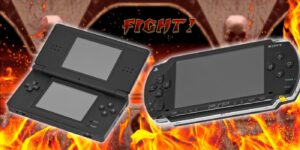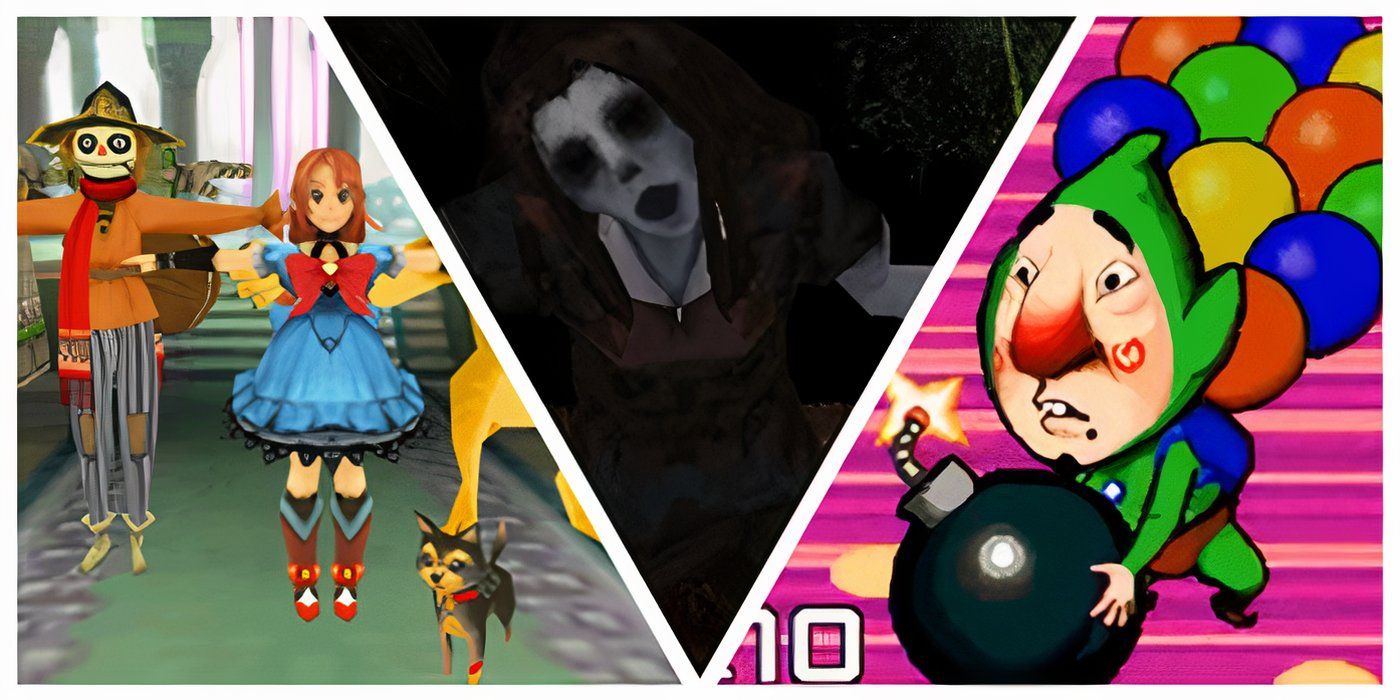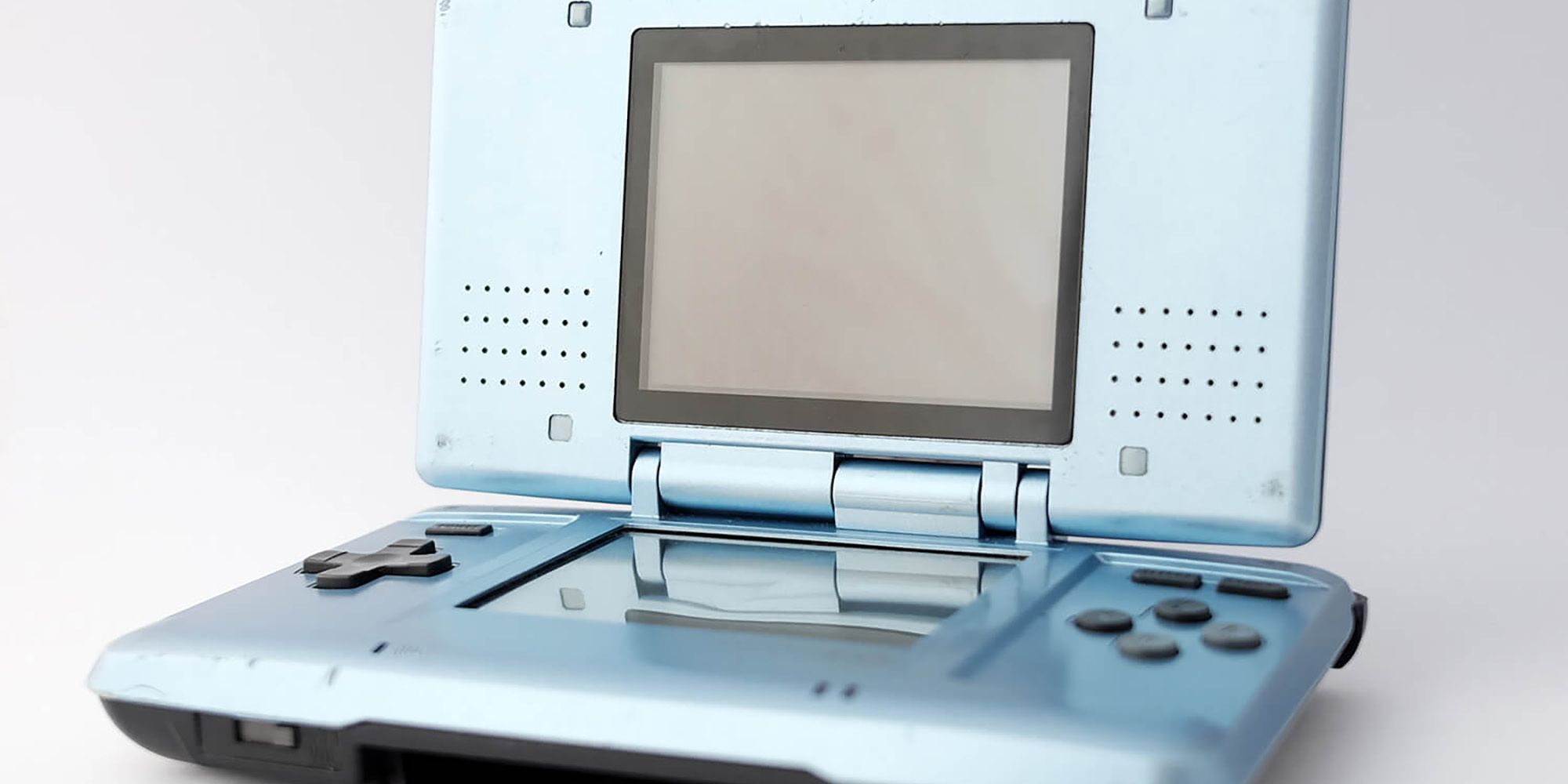
Nintendo DS vs. PlayStation Portable
Video gaming has almost always been a competitive industry, especially when it comes to video game hardware. An exception to this has to do with the handheld video game console market, which has long been dominated by Nintendo’s monstrously successful line of handheld systems. Their Game Boy series of video game consoles, in particular, may be more technically simplistic compared to its contemporaries. Still, the Game Boy line has always been more affordable than the competition. Whereas Nintendo could go to serious lows in the home console market, they would always come out on top in the handheld video game console market. Enter Sony, who sought to threaten Nintendo’s dominance in this field.
Sony, still in a state of euphoria over the landslide success of their PlayStation 2 console, threw their hat in the ring of the handheld video game market. Enter the PlayStation Portable, an advanced handheld video game console that sought to compete with the Nintendo DS. Number of screens aside, the PSP was very much in line with the PlayStation 2 as far as hardware was concerned, while the Nintendo DS barely scraped the Nintendo 64 in terms of hardware. Additionally, the PSP was so powerful that it earned ports of many AAA titles of its day, more than the Nintendo DS ever did. That said, the Nintendo DS’s lack of power did not make it a worse handheld system, with that and the PSP both having advantages and disadvantages.
Hardware: Nintendo DS vs. PlayStation Portable
Or: Portable Nintendo 64 vs. Portable PlayStation 2
There is a Jupiter-sized difference in the hardware between the Nintendo DS and PlayStation Portable, all of which starts by looking at the handheld systems at first glance. With the Nintendo DS, the most obvious characteristic is its two screens; the top screen tends to display the game itself, while the bottom screen tends to be used as a touch screen. The idea is that other than the face buttons, the touch screen can be used as a controller in itself by means of either context-sensitive controls or as an alternative to the standard buttons.
Outside this gimmick, the Nintendo DS is equipped with two identical ARM processors, one for rendering the system’s graphics and the other for rendering the system’s audio. The graphics processor can render surprisingly effective 3D imagery for a handheld console with such a gimmick, coming close to being a portable Nintendo 64.

Related
The Nintendo DS was a groundbreaking gaming handheld, but it’s also the home for some truly odd and unbelievable releases.
By contrast, the PSP’s main priority was being the most powerful handheld video game console ever compared to Nintendo’s handheld offerings. The PSP uses an MIPS processor that is closely related to what is used on the PlayStation 2; this MIPS processor aided the PSP’s multimedia capabilities and helped it get close to being a literal handheld version of a home console.
The PSP’s use of Universal Media Discs, or simply UMDs bolstered this reputation. These discs could store twice as much as a CD, meaning that uncompressed music and video, especially movies in that regard, could be played on the handheld video game system. More importantly, these large UMDs could store equally large games that looked on par with what could be found on the PlayStation 2 and other consoles. The PSP might not have a touchscreen, but it makes up for that in its sheer power.
Games: Nintendo DS vs. PlayStation Portable
Or: Simple Fun vs. Cutting Edge
The hardware on the Nintendo DS and PlayStation Portable did have an impact on what video games made it to each of the two handheld video game consoles. The DS certainly had weaker hardware than the PSP, which meant Nintendo placed a premium on first-party titles that at least demonstrated the touchscreen gimmick. This was no more apparent than in the Mario games made for the Nintendo DS, which made use of said gimmick, along with at least flexing the system’s somewhat weaker 3D graphics.
Two examples include Super Mario 64 DS, a launch title for the Nintendo DS and a great demonstration of the console’s graphical capabilities, and New Super Mario Bros., the best-selling video game on the DS and a fun throwback to the older Mario platforming games. Funnily enough, despite its weak hardware, the DS earned a few AAA ports near the end of its life, including a decent port of Call of Duty: Black Ops, among others.
|
Console |
Best-Selling Game |
|
Nintendo DS |
New Super Mario Bros. |
|
Sony PlayStation Portable |
Grand Theft Auto: Liberty City Stories |
By contrast, the PSP and its home console-equivalent hardware allowed many games on the handheld console, especially early in its life, to be much larger in scale than those on the DS. A clear example is Grand Theft Auto: Liberty City Stories, the best-selling game on the PlayStation Portable. It is a full-fledged GTA game that retains the basic plot structure and gameplay mechanics of its home console counterparts.
The PlayStation Portable has a wider library of games that are worth playing today, from ports like The Simpsons Game and LittleBigPlanet to exclusive titles like Burnout Legend and Metal Gear Acid. Additionally, with the power the PSP had, it became a reliable console to port older titles to, including Castlevania: The Dracula X Chronicles and Parappa the Rapper. The PSP wound up with plenty of great games if not as many as the Nintendo DS.
Accessories and Parity: Nintendo DS vs. PlayStation Portable
Or: The Nintendo DS and Wii vs. the PlayStation Portable and PlayStation 3
When comparing the DS and PSP, players often ask how the two stack up in terms of peripherals and parity with their home console counterparts. The DS featured a bottom cartridge slot with two main purposes: backward compatibility with the Game Boy Advance and support for a variety of accessories. Official Nintendo accessories included a memory expansion pack, which enabled the DS to browse the internet. Third-party accessories, such as the Guitar Grip, allowed players to enjoy Guitar Hero games on a handheld device.
In terms of parity with home consoles, the DS didn’t focus as much on integration with the Wii as the PSP did with the PlayStation 3. However, the Nintendo DS did allow players to download games from the Wii’s Nintendo Channel in certain cases.

Related
10 Best PSP RPGs That Still Hold Up
The PSP era was full of RPG classics with fun mechanics, lots of action, and challenging battles that make this console a favorite among fans.
Meanwhile, with the PSP, the lack of any visible expansion slot meant that peripherals were not commonplace on the otherwise powerful video game console. Any serious accessories were almost never released in the United States, with peripherals like a television tuner being exclusive to Japan. That’s not to say there weren’t any impressive accessories for the PSP at all; one deeply impressive peripheral, a GPS, made the PlayStation Portable more like a personal digital assistant than the powerful multimedia handheld it was meant to be.
However, as far as parity with the PlayStation 3 is concerned, the PSP was fully backed up in that regard thanks to the similar user interfaces and PlayStation Network support. Among others, PSP users can access their PlayStation 3 consoles via Remote Play, which allows the PSP to view images and videos stored on the PlayStation 3, along with allowing the former to access features in the latter’s video games.
Verdict: Nintendo DS vs. PlayStation Portable
Or: The Nintendo DS’s Triumph vs. PlayStation Portable’s Successful Failure
In the end, the competition between the DS and the PSP turned out to be less competitive than one might have expected. That doesn’t mean one completely overshadowed the other. Nintendo’s strength in handheld gaming played a significant role. While not as powerful as the PSP, the DS’s dual-screen design and touchscreen innovation captured the hearts of players, compensating for its lack of power. Many players continue to revisit the DS library, with titles like Mario Kart DS remaining beloved despite the less refined 3D graphics. The DS had plenty going for it, even without the PSP’s power and console integration.
|
Console |
Sales (Units) |
|
Nintendo DS |
154.02 million |
|
Sony PlayStation Portable |
82.52 million |
The PSP was undoubtedly the more powerful handheld console, particularly compared to Nintendo’s historical competitors in the handheld gaming space. However, it faced several drawbacks. Using an optical disc medium for game storage proved less than ideal for a handheld system, as discs were prone to scratching and skipping. Additionally, the lack of robust peripherals may have hurt its long-term appeal, especially when compared to the Nintendo DS, which leveraged its expansion slot for accessories like the Guitar Grip for Guitar Hero.
While the PSP boasted an impressive library of games, the DS offered more titles that fully utilized its innovative features. Ultimately, the PSP sold well and maintained a dedicated cult following, but it couldn’t match the DS’s innovative design and game library, which cemented Nintendo’s dominance in the handheld market.




